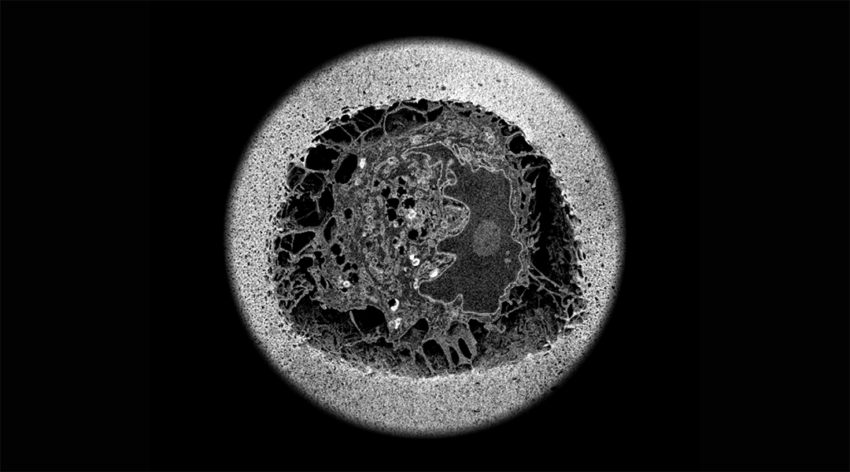A natural chemical tether helps researchers attach cells to inert biomaterials for better cell models and therapies.
Building artificial tissues that mimic the intricacy of their living counterparts is tricky business. One challenging element is developing biomaterials that can deliver and sustain living cells without interfering with their intended function or eliciting a response from the body’s immune system.
“Cells cannot survive and function without sensing or interacting with their environment,” said Tom Kamperman, a researcher in the Leijten Laboratory in the Department of Developmental BioEngineering at the University of Twente, the Netherlands. “Therefore, biomaterials are typically functionalized with cell adhesives.”
Cells are directed by both chemical and mechanical signals. Adhesives keep cells in place and allow them to interact with supporting biomaterials, which influence their function and development. “But cells can only sense and respond to a material’s mechanical triggers if they are actually connected or ‘tethered’ to it,” added Kamperman. “For example, stem cells can respond to the stiffness of a material by differentiating into fat or bone cells.”
Kamperman is part of a team of scientists seeking to improve these materials by replacing adhesives with more compatible and controllable cell binders. “Cell adhesion is known to induce [an] inflammatory response upon implantation,” explained Kamperman. “We identified a new way to connect materials to cells by crosslinking natural molecules.”
They dubbed their method “Discrete inducible On-cell CrosslinKING”, or DOCKING, and based it on a similar crosslinking mechanism used in nature to strengthen the stability of proteins, cells, and tissues. “But it has not yet been leveraged to engineer cell-material connections,” added Kamperman.
Specific enzymes in the body form chemical bonds to the amino acid tyrosine found naturally in cells. To link cells to biomaterials, the team fitted a material made from dextran with tyramine — a molecule similar to tyrosine — and then demonstrated the ability of the dextran-tyramine material to form links to tryosine found on and around cells.
DOCKING allowed the team to attach cells to materials that are bioinert, which means they will likely not elicit an immune response when transplanted into the body, minimizing the risk of rejection.
This not only leads to safer materials but lends a degree of control over the ability to attach cells to surfaces — something that is lacking in strategies that use adhesives. This, says Kamperman, will allow researchers to study cell-material interactions in new ways.
“It can facilitate tissue engineering by providing a method for discretely inducing cell-adhesion to steer, for example, stem cells, while omitting strong inflammatory responses upon implantation,” he said. “Furthermore, the mechanical interaction between cells and their microenvironment is important to understand and engineer disease models. For example, tissue stiffening is associated with tumor development, scar formation, and organ cirrhosis.”
The team plans to continue investigating how DOCKING can be used to generate better disease models as well as cell and tissue therapies.
Reference: Tom Kamperman, et al., Tethering Cells via Enzymatic Oxidative Crosslinking Enables Mechanotransduction in Non-Cell-Adhesive Materials, Advanced Materials (2021). DOI: 10.1002/adma.202102660

